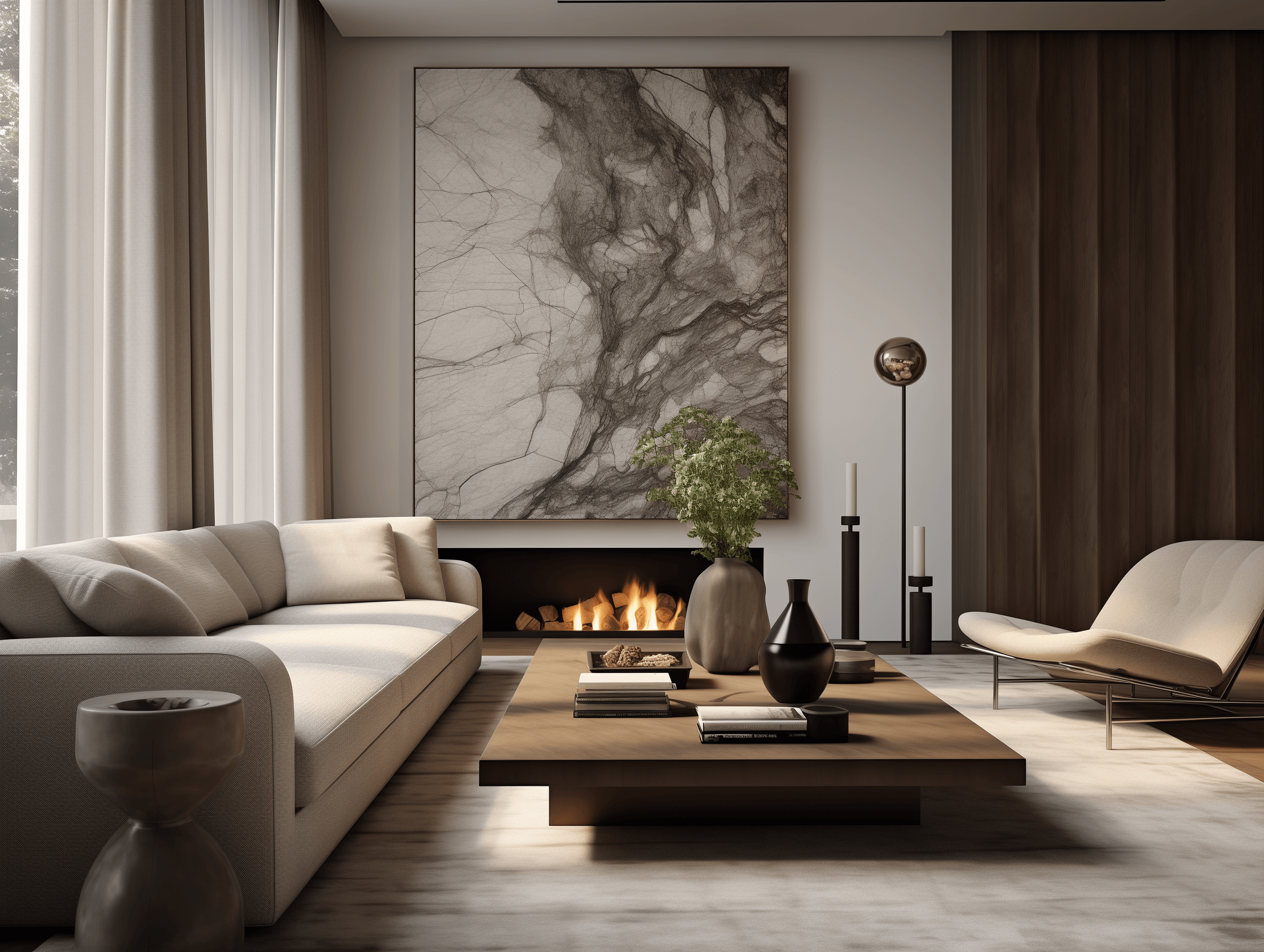There’s a quiet transformation that happens when a bare wall finally meets the right piece of art. Suddenly, a space that felt incomplete takes on rhythm, emotion, and focus. It’s not just decoration — it’s design psychology at work. Well-chosen artwork doesn’t shout for attention; it calibrates the balance between emptiness and presence, between what’s seen and what’s felt.
For most people, the challenge isn’t knowing that they want art — it’s knowing what kind. Should it be minimalist, textured, or colorful? Framed or frameless? Should the canvas echo the tones of your sofa, or contrast them entirely? The good news is that choosing art doesn’t have to be a guessing game. With a few simple principles — scale, color, and composition — anyone can turn their walls into an extension of their personality.
Understanding the Room Before the Art
Before picking anything, pause and look at your room the way a designer would. Every wall tells you something: the ceiling height, the light direction, the size of the furniture, even the rhythm of windows and doors. Together, these details create the “visual architecture” your art needs to fit into.
If your room is small or narrow, choose a piece with depth or perspective — something that visually opens the wall rather than closing it. Wide horizontal canvases make ceilings feel lower but rooms wider; vertical formats draw the eye up and create height. In open-plan spaces, repetition ties zones together: similar hues or textures across multiple canvases help the design flow rather than feel fragmented.
Large rooms, on the other hand, need anchoring. Without a central visual point, even the most elegant interior feels unfinished. Here’s where a statement canvas becomes more than an accessory — it’s your room’s gravitational center.
Matching Scale and Mood
Big impact happens when scale meets palette. For a single statement above a sofa or bed, aim for a canvas that’s two-thirds to three-quarters of the furniture width and keep the center around 145 cm from the floor — roughly eye level for most adults. This rule works because our eyes naturally seek balance between wall height and surrounding objects.
Color temperature also matters. If your room runs cool (stone, slate, gray), introduce one warm accent — terracotta, camel, or brass — to rebalance the tone. Conversely, if your space leans warm with wood and beige, a splash of blue or charcoal adds depth and calm. Matte finishes absorb light for intimacy; gloss finishes bounce it for energy.
When exploring possibilities, browse CetArt canvas prints to compare abstracts, botanicals, and cityscapes curated for contemporary interiors. These ready-to-hang pieces are designed to harmonize with different palettes and room types, letting you visualize your options without second-guessing proportions or style direction.
Composition: Single Statement or Gallery Flow
Once scale feels right, decide on composition. A single large piece delivers serenity — it lets the room breathe and emphasizes architectural features like windows or arches. Gallery walls, on the other hand, invite play. They’re ideal for long corridors, dining rooms, or workspaces where smaller stories can unfold together.
When building a gallery wall, mix orientation and medium but keep cohesion through color or framing. Three or five pieces tend to read best — odd numbers guide the eye naturally. Place the largest piece off-center rather than dead center; asymmetry feels human and dynamic.
For square rooms, align the central axis of your composition with a key piece of furniture — such as the midpoint of your sofa or headboard — to maintain visual logic.
Lighting: The Invisible Frame
Even the most beautiful canvas loses half its power in bad lighting. Natural light brings out true color but shifts throughout the day; artificial light fixes the mood. Wall washers and adjustable spotlights are perfect allies — they spread a soft, even glow without glare.
Avoid harsh overhead bulbs; instead, angle lighting at 30 degrees to the artwork surface to prevent reflections. For textured canvases, grazing light enhances relief and shadow. Smart bulbs that change temperature from cool daylight to warm evening tones can subtly adapt how your art interacts with the rest of your interior.
Height, Spacing, and Everyday Practicalities
Hanging height and spacing are where rooms either feel settled or fussy. Keep consistent margins — 5 to 8 cm between frames — and always measure twice before hammering once. In living rooms, hang so the midpoint of the composition sits around 145 cm; in dining areas or home offices, slightly lower works better since viewers are seated.
Before committing to a gallery layout, trace your pieces on kraft paper and tape them to the wall. Step back, adjust spacing, and photograph from different angles to check symmetry. For video calls or content creation, make sure the artwork sits in the upper third of your webcam frame — that’s where backgrounds look intentional, not improvised.
If you’re looking for more refined placement and décor coordination, explore styling ideas for living rooms that break down real-world examples of proportion, palette pairing, and gallery spacing. These guides explain how to adapt professional design logic to your own rooms, whether you rent or own, and how to refresh your walls without starting from scratch.
Building Confidence in Your Choices
Decorating a wall isn’t about trends; it’s about how a space makes you feel. A minimal monochrome may bring calm; a vivid abstract may spark creativity. The right artwork can quiet a room or ignite it. That’s why good interiors rarely happen by accident — they’re the result of small, informed decisions repeated thoughtfully.
When in doubt, think of your wall as a storyboard for your home. Each canvas contributes to a mood: together, they narrate the rhythm of your daily life. Whether you start with one large centerpiece or curate a series of smaller prints, the process should feel intuitive, not intimidating.
And the reward? A space that finally feels like you — balanced, alive, and unmistakably personal.



Komentáře